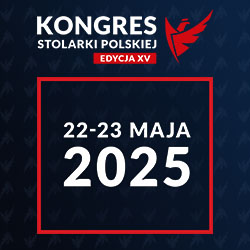dr inż. Joanna A. Pawłowicz Uniwersytet Warmińsko-Mazurski w Olsztynie, WydziałGeodezji, Inżynierii Przestrzennej i Budownictwa
Autor do korespondencji e-mail : Ten adres pocztowy jest chroniony przed spamowaniem. Aby go zobaczyć, konieczne jest włączenie w przeglądarce obsługi JavaScript.
DOI: 10.15199/33.2016.12.23
W artykule określono wpływ zniekształcenia wiązki lasera podczas pomiarów obiektów z różnych materiałów, na ich zobrazowanie z pomiaru wykonanego skanerem laserowym 3D. Na podstawie pozyskanej chmury punktów przedstawiono problem jakości danych, uzależnionych od intensywności odbicia promienia i rodzaju materiału, z którego jest wykonany obiekt. Znajomość tych problemów pozwala na uzyskanie cennych danych koniecznych do wykonania digitalizacji i wizualizacji praktycznie każdego obiektu budowlanego.
Słowa kluczowe: materiały budowlane, skaning laserowy, intensywność odbicia, chmura punktów.
* * *
Impact of physical properties of different materials on the quality of data obtained by means of 3D laser scanning
This paper discusses the impact of a laser beam deformation during 3D laser scanning of different objects. Based on a point cloud obtained for selected examples, the paper addresses the issue of the quality of data dependant on the intensity of laser beam reflection and the type of material. The knowledge of these issues allows obtaining valuable data necessary to develop a digital and visualmodel of practically any building structure made of any given material.
Keywords: buildingmaterial; laser scanning, reflection intensity, point cloud.
Literatura
[1] Boehler Wolfgang,Andreas Marbs. 2003. Investigating Laser Scanner Accuracy. Institute for Spatial Information and Surveying Technology. FH Mainz,University of Applied Sciences,Mainz, Germany.
[2] Pawłowicz Joanna A. 2014. „3D modelling of historic buildings using data froma laser scanner measurements”. Journal of International Scientific Publications: Materials,Methods and Technologies,Volume 8.
[3] Pawłowicz JoannaA. 2014. „Skaner laserowy 3D jako narzędzie do rejestracji nieprawidłowości występujących w konstrukcjach budowlanych”. Logistyka, tom nr 5: 1240 – 1246.
[4] Ravani Bahram, Jagannath Hiremagalur, KinYen, KevinAkin, Triet Bui, Ty Lasky. 2007. Creating standards and specifications for the use of laser scanning in Caltrans projects. California AHMCT Program, University of California at Davis, California Department of Transportation.
[5] Voegtle Thomas, Ilse Schwab, Tania Landes. 2008. Influence of different materials on the measurements of terrestrial laser scann. Institute for Photogrammetry and Remote Sensing (IPF), Univ. of Karlsruhe, Germany.
Otrzymano : 22.09.2016 r.
Materiały Budowlane 12/2016, str. 76-77 (spis treści >>)






























